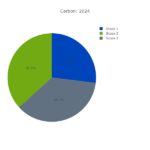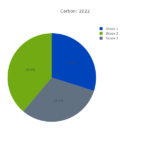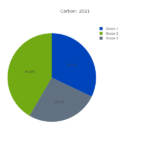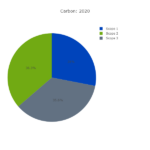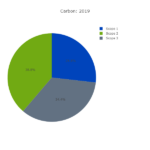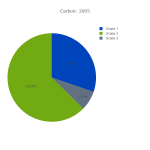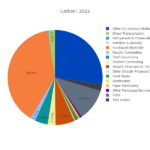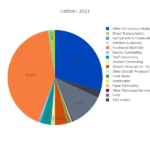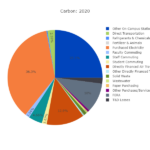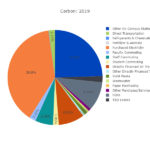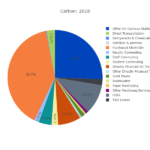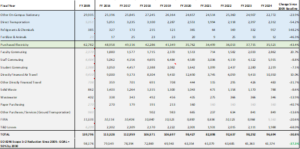Climate Change & GHG Emissions
Understanding current greenhouse gas (GHG) emissions is a necessary step towards developing goals for lowering future GHG emissions and strategies to combat global climate change. Below you will find summaries of GHG Inventories for East Carolina University since fiscal year (FY) 2015. There have been numerous changes in campus infrastructure over the years, with a potential to change source distribution and total amount of GHG emissions.
GHG inventories are comprised of three distinct scopes of emissions sources. Scope 1 includes GHG emissions from sources that are owned or controlled by the University such as on-campus stationary sources (natural gas, propane, and distillate oil), vehicles and equipment (direct transportation), fugitive emissions (refrigerants and chemicals), and fertilizer used by athletics and grounds services. Scope 2 includes purchased electricity. Scope 3 is the most difficult to track including emissions not owned or directly controlled by the University, but related to ECU activities such as commuting, directly financed air travel and mileage reimbursed, solid waste, wastewater, paper purchasing, and T&D losses.

SIMAP® is a carbon and nitrogen-accounting platform that ECU uses to track, analyze, and improve our campus-wide sustainability. The proven algorithms, based on nearly two decades of work supporting campus inventories with the Campus Carbon Calculator, CarbonMAP and Nitrogen Footprint Tool, help us to:
- Create a baseline
- Benchmark your performance
- Create reports
- Set goals
- Analyze your progress year over year
The carbon footprint includes greenhouse gas emissions in the form of CO2, CH4, N2O, and refrigerants/chemicals. The calculation of the carbon footprint follows the guidelines from the GHG Protocol. Whenever possible, the same data sources are used for both the carbon and nitrogen footprint for alignment in methods and system bounds. The main source for the carbon footprint emission factors is the EPA US GHG Inventory.

The largest contributor to the GHG emissions profile of ECU has remained to be Scope 2 Purchased Electricity, which accounts for about 40% of ECU’s total carbon footprint. Scope 1 emissions sources consistently account for nearly a quarter of GHG emissions, while Scope 3 emissions sources contribute approximately one third of the total. In 2018, NC Governor Cooper issued Executive Order No. 80, which mandated that state agencies reduce Scopes 1 and 2 GHG emissions 40% by 2025 and, in 2022, Executive Order No. 246 increased that goal to 50% GHG emissions reductions by 2030. In comparison to the 2005 baseline of GHG emissions, ECU has reduced its carbon footprint a little over 33% on scopes 1 and 2 emissions. Below you can review the GHG Scopes, Profiles, and full results from compiling GHG emissions inventories since FY 2016.
- FY24 Scopes
- FY23 Scopes
- FY22 Scopes
- FY21 Scopes
- FY20 Scopes
- FY19 Scopes
- FY18 Scopes
- FY17 Scopes
- FY16 Scopes
- FY05 Scopes (Baseline)
- FY24 Categories
- FY23 Categories
- FY22 Categories
- FY21 Categories
- FY20 Categories
- FY19 Categories
- FY18 Categories
- FY17 Categories
- FY16 Categories
- FY05 Categories
2005-2024 Baseline Comparison Table
